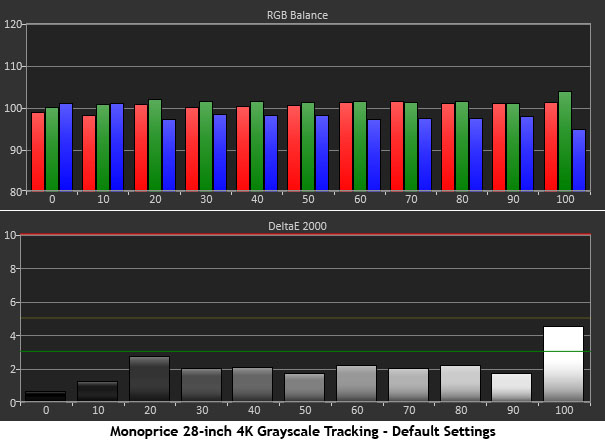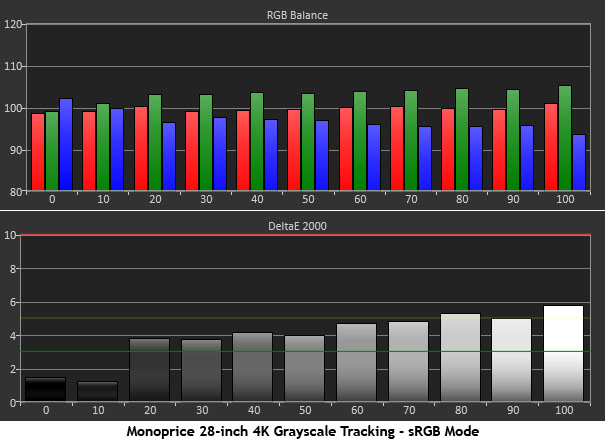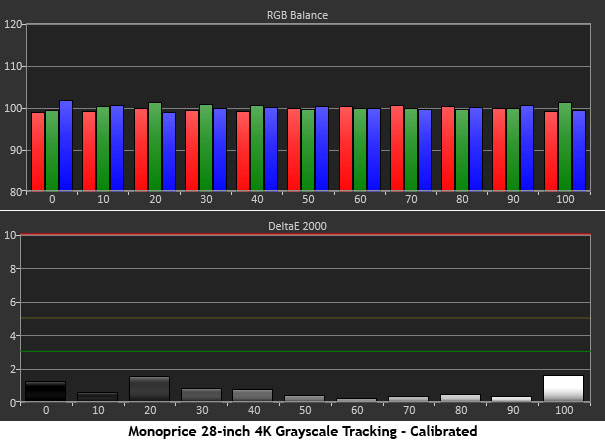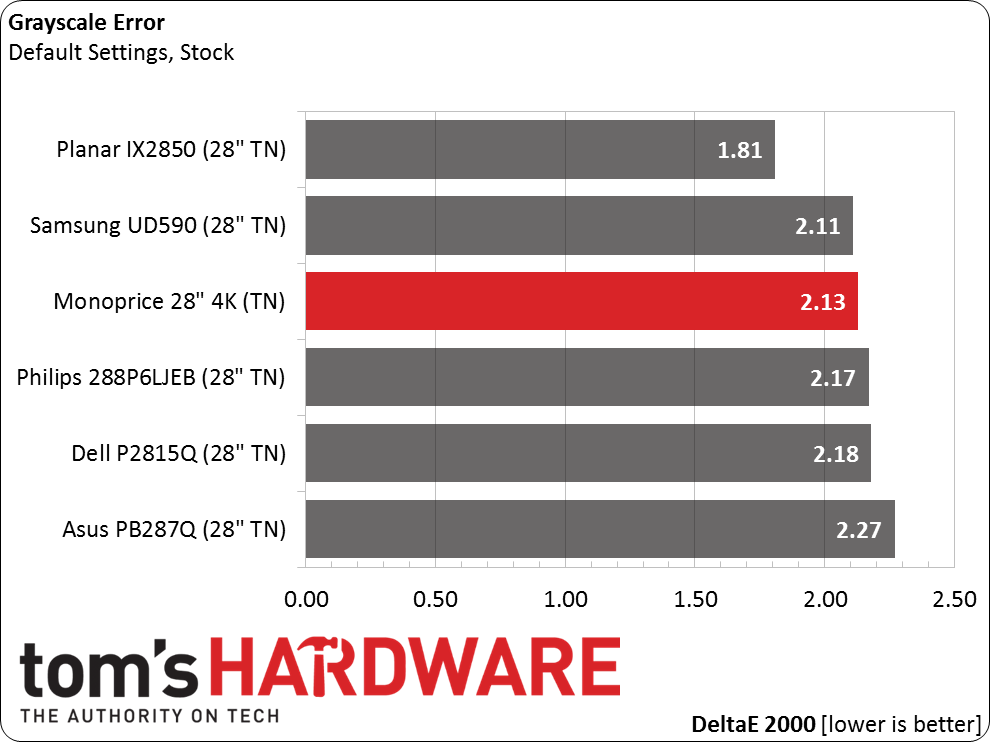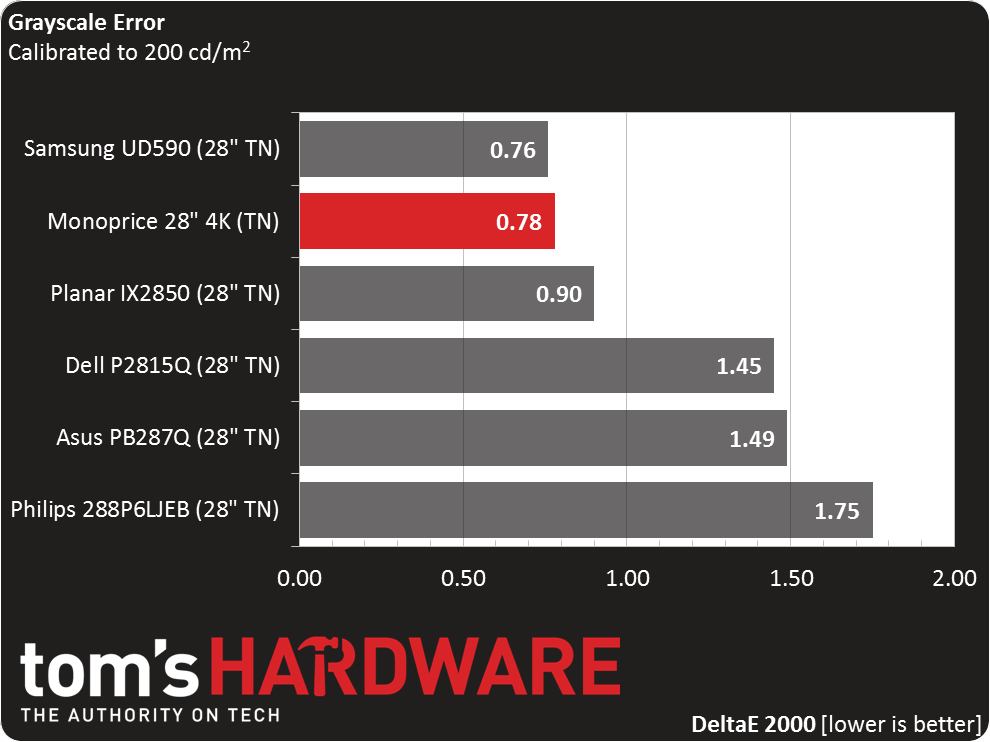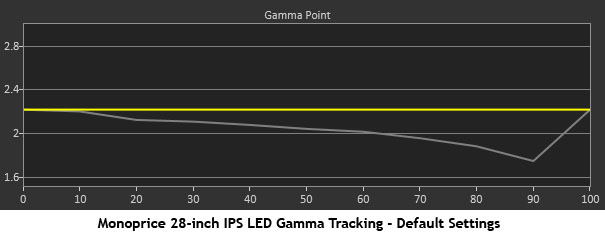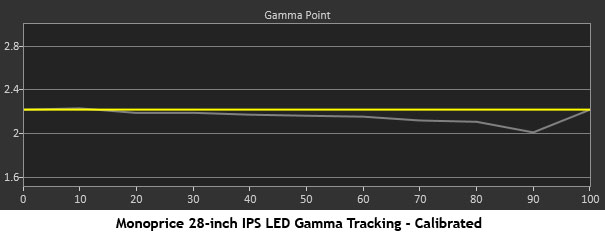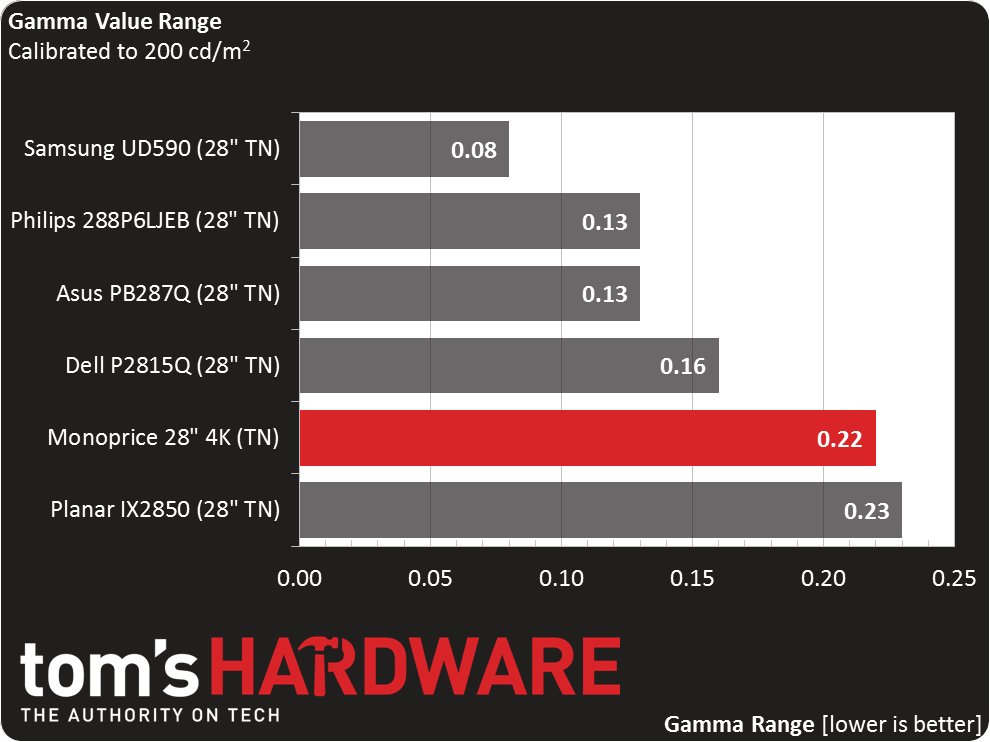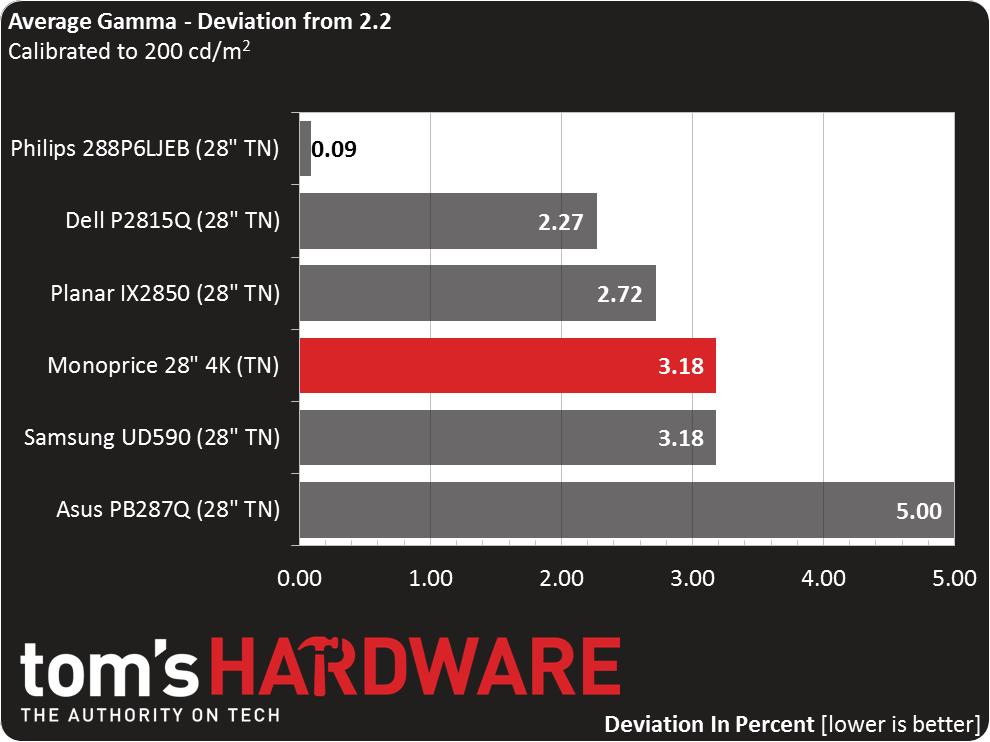Monoprice CrystalPro 28-Inch 4K Monitor Review
Nearly every monitor manufacturer has a 28-inch TN Ultra HD monitor in its line-up. Today we’re looking at Monoprice’s CrystalPro 4K. Even though it’s based on the same part as its competitors, you get quality that matches or exceeds those displays.
Why you can trust Tom's Hardware
Results: Grayscale Tracking And Gamma Response
Our grayscale and gamma tests are described in detail here.
A budget monitor that registers an out-of-box result this good is rare. Aside from a little too much green and red at 100-percent brightness, the Monoprice has no visible error. That’s mainly due to the Innolux part, which shows a similar result in all the brands we’ve tested so far. The chart shows the Normal color temp mode.
Usually when a display has an sRGB mode, it’s pretty close to correct. But this one takes a step downward in accuracy. Now you can see a slight green tint across the board. It’s not a grievous error, however, Normal is definitely the better choice if you don’t calibrate.
These are the numbers you'd expect from an expensive professional monitor. Obviously, Monoprice didn't cut corners in the engineering department with its Ultra HD flagship.
Here is our comparison group:
A grayscale error of 2.13dE is perfectly acceptable for any screen in our opinion. Looking at the entire group, this is one area where all the screens are pretty much equal. None of them are begging for a calibration and they’ll all look just fine without one.
OK now we’re seriously impressed. Remember that all of the displays in this chart use the same panel. Obviously, that doesn’t mean the end products are created equal.
Get Tom's Hardware's best news and in-depth reviews, straight to your inbox.
The Asus and Philips screens don't seem to be taking full advantage of the panel’s capabilities. A result of .78dE is what we’d expect from a professional screen costing at least twice as much.
Gamma Response
We found a little weakness in our gamma tests. Without calibration, there is a gradual slide all the way up the brightness scale. It robs image depth because much of the detail is too bright. Unfortunately, the gamma presets only move the tracking up and down. The trace’s shape looks the same at all settings.
Calibration improves the gamma response significantly. Now there is only a minimal error at the 90-percent mark. If you want an overall darker look, you can select the 2.4 gamma preset, though it’s a fairly coarse adjustment. In our tests, the best numbers come from the 2.2 option.
Here is our comparison group again:
None of these displays have any serious gamma tracking problems. A fifth-place finish in this group is not a bad thing, though there is a little room for improvement from Monoprice and Planar.
We calculate gamma deviation by expressing the difference from 2.2 as a percentage.
If the Monoprice had a 2.3 gamma option, the result would likely be better. Our measured average is 2.13, translating to a 3.18-percent deviation. The variance is toward the light side, and we’d prefer to see it a little too dark instead. This is extreme nit-picking, however. We really like the look of the CrystalPro 4K a lot.
Current page: Results: Grayscale Tracking And Gamma Response
Prev Page Results: Brightness And Contrast Next Page Results: Color Gamut And Performance
Christian Eberle is a Contributing Editor for Tom's Hardware US. He's a veteran reviewer of A/V equipment, specializing in monitors. Christian began his obsession with tech when he built his first PC in 1991, a 286 running DOS 3.0 at a blazing 12MHz. In 2006, he undertook training from the Imaging Science Foundation in video calibration and testing and thus started a passion for precise imaging that persists to this day. He is also a professional musician with a degree from the New England Conservatory as a classical bassoonist which he used to good effect as a performer with the West Point Army Band from 1987 to 2013. He enjoys watching movies and listening to high-end audio in his custom-built home theater and can be seen riding trails near his home on a race-ready ICE VTX recumbent trike. Christian enjoys the endless summer in Florida where he lives with his wife and Chihuahua and plays with orchestras around the state.
-
cats_Paw 4k, 3d... next they will make a 5 something.Reply
THe market is not ready yet for that resolution, and the price is too high. -
milkod2001 Looking at Amazon link with price:$749 and other Amazon links for monitors from well established brands(cheaper) ,this Monoprice TN looks like bad attempt for joke.Reply
-
de5_Roy i wish it was IPS too!Reply
i also wish it was a 22-24" display. IMO woulda helped with viewing angle issues that plague TN-based monitors i.e. smaller size leads to less need for eye movement, sharper image from higher PPI. -
Karsten75 Your links are FUBAR. The link for the Asus PB287Q links to an AOC monitor. In any event, the price for the Asus PB287Q on Amazon is $612, NOT $399.Reply -
aberkae The price is $429 for this 4k monoprice monitor, thanks for the review you guys listen to requests much appreciated.Reply -
DisplayJunkie Wow, Monoprice FINALLY managed to produce a display which isn't completely useless like their previous products with no backlight/brightness control.Reply
Seems well built and the factory calibration is decent but $575 for TN, 60Hz...and most importantly and not surprisingly, only 850:1 contrast ratio (which Tom's calls "Good contrast" LOL).... as with all 4K TNs, all it has going for it is the high resolution. No other compelling reason to buy it, many other compelling reasons for other displays. -
aberkae Reply
they just had a sale that ended it was $429 I have the promo in my email, I'm expecting the price to fall again to that price15320841 said:Wow, Monoprice FINALLY managed to produce a display which isn't completely useless like their previous products with no backlight/brightness control.
Seems well built and the factory calibration is decent but $575 for TN, 60Hz...and most importantly and not surprisingly, only 850:1 contrast ratio (which Tom's calls "Good contrast" LOL).... as with all 4K TNs, all it has going for it is the high resolution. No other compelling reason to buy it, many other compelling reasons for other displays.
-
beshonk Where's the Benq XL2420G review? I'm debating on 4k, but whatever i buy will be G-sync for sure.Reply -
Chris Droste right now; today, 2/18 on AMAZON; this monitor is $750Reply
Dell P2815Q = $409
Samsung U28D590D = $529
both are UHD, HUNDREDs of dollars cheaper from brands with better reputations, and based on what Tom's knows about the panel it's all from the same Manufacturer, so...why get the Monoprice one again? adjustable stand for an extra $200 maybe? i don't get it...
